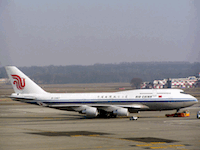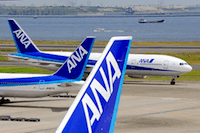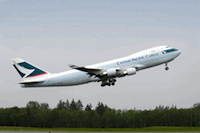Asian carriers are trying to catch up with their Western counterparts in the biofuel race and in the implementation of other green initiatives aimed at reducing their carbon footprint. Doing their share to lessen the environmental impact of air travel, several airlines in the region have announced their strategy to promote sustainable flights – which includes using younger and more fuel efficient fleet, participating in carbon offsetting programmes, and most importantly, the use of clean biofuels.
Below are the five carriers that have given their commitment to green and sustainable flights:
 AIR CHINA
AIR CHINA
On the biofuels front: The carrier said in February that it will carry out a biofuel demonstration flight this year using a Boeing B747 aircraft in collaboration with PetroChina.
Other green initiatives: No other green initiatives have been announced.
AIR NEW ZEALAND (ANZ)
On the biofuels front: This carrier was the first within the region to run a test flight on December 30, 2008, using the Boeing B747-400.
Other green initiatives: ANZ has adopted innovative fuel-efficient arrival and landing techniques. Rob Fyfe, chief executive of Air New Zealand, cites examples such as “taxiing with one engine and working with air traffic control to create continuous descents when landing.”
 ALL NIPPON AIRWAYS (ANA)
ALL NIPPON AIRWAYS (ANA)
On the biofuels front: The first test flight yet to be made, although the airline has confirmed its collaboration with Nippon Oil Corporation to run test flights within the next few years.
Other green initiatives: It is currently trying out fuel-efficient electric cars for limousine services until March 31, 2011, enabling “passengers to make their contribution by cutting CO2 emissions when they continue their journeys by road”, said an ANA spokesperson.
CATHAY PACIFIC
On the biofuels front: The carrier joined the global Sustainable Aviation Fuel Users Groups (SAFUG) in 2009. Although Cathay’s biofuel projects are still in the pipeline, it won't be long before it joins the other carriers in running test flights because, as Dr Mark Watson, head of environmental affairs at Cathay Pacific, said: “We’re not in this for PR – this is about enabling us to put our business onto a more sustainable footing”.
Other green initiatives: In its Sustainable Development Report 2009, the airline outlined several techniques that are being used to reduce environmental impact of its general operations. For example, since the weight of an aircraft determines how much fuel is burned, the carrier now uses an alternative base coat exterior paint across its fleet in order to reduce the total weight of the aircraft. This was first successfully trialled on an Airbus A340 in 2008, which reduced the weight of the aircraft by 23kg.
 JAPAN AIRLINES (JAL):
JAPAN AIRLINES (JAL):
On the biofuels front: This was the second Asian carrier, closely after Air New Zealands, to run a biofuel test flight on January 30, 2009, using a Boeing B747-300 from Haneda Airport.
Other green initiatives: JAL pilots try to make sharp ascents as much as possible to reach high altitudes as soon as possible and therefore reduce the noise pollution for those on the ground. Furthermore, at Haneda and Narita airports, the water used in cleaning the aircraft is collected and sent to a waste water-treatment facility for recycling.
Alisha Haridasani








